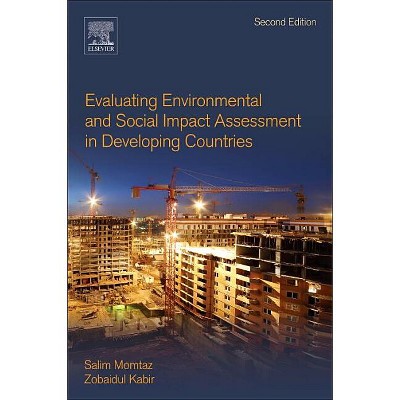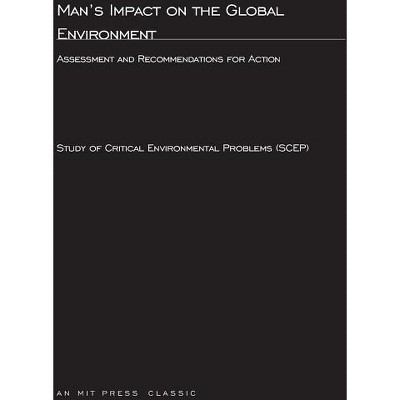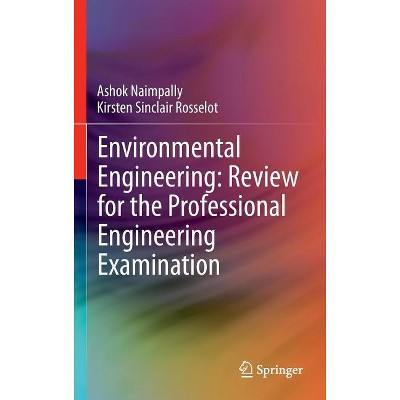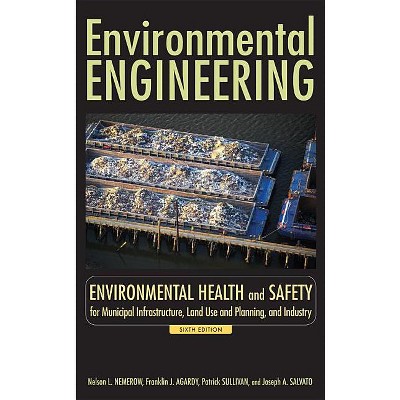Sponsored

Environmental Impact Statements - by Charles H Eccleston (Hardcover)
In Stock
Sponsored
About this item
Highlights
- One-stop, step-by-step guidance in the "how" of EIS project andstrategic planning This outstanding guide focuses on the Environmental ImpactStatement (EIS) not merely as a document to be prepared, but as aprocess and framework for the planning of programs and projects.
- About the Author: CHARLES H. ECCLESTON is the author of The NEPA Planning Process and the upcoming How to Write Effective Environmental Assessments, both from Wiley.
- 368 Pages
- Technology, Environmental
Description
Book Synopsis
One-stop, step-by-step guidance in the "how" of EIS project andstrategic planning This outstanding guide focuses on the Environmental ImpactStatement (EIS) not merely as a document to be prepared, but as aprocess and framework for the planning of programs and projects. Itpresents state-of-the-art strategies, tools, techniques, andmethodologies for managing EIS projects of any size and emphasizespractical approaches to problems that have traditionally hinderedNational Environmental Policy Act (NEPA) compliance andpractice. This single, comprehensive volume synthesizes and describes allrelevant guidance and requirements that the EIS document mustsatisfy and illustrates relevant requirements with lessons fromcase law. Employing an incremental, building-block approach todescribe the entire EIS planning process in complete detail, thisindispensable handbook guides readers through each step of theprocess and provides:* Step-by-step guidance on using the Total Federal Planning (TFP)strategy to reduce time and effort and streamline the entire EISprocess
* A complete EIS checklist to ensure that every item is accountedfor when preparing the statement
* Tools from value engineering theory, TQM, and systems planningfor rendering the early decision-making process more efficient andeffective Professionals in government, consulting, and the private sector whoseek to master NEPA, beginners and experts alike, will findEnvironmental Impact Statements to be the most economical, helpful, and complete resource available anywhere.
From the Back Cover
One-stop, step-by-step guidance in the "how" of EIS project and strategic planningThis outstanding guide focuses on the Environmental Impact Statement (EIS) not merely as a document to be prepared, but as a process and framework for the planning of programs and projects. It presents state-of-the-art strategies, tools, techniques, and methodologies for managing EIS projects of any size and emphasizes practical approaches to problems that have traditionally hindered National Environmental Policy Act (NEPA) compliance and practice.
This single, comprehensive volume synthesizes and describes all relevant guidance and requirements that the EIS document must satisfy and illustrates relevant requirements with lessons from case law. Employing an incremental, building-block approach to describe the entire EIS planning process in complete detail, this indispensable handbook guides readers through each step of the process and provides:
- Step-by-step guidance on using the Total Federal Planning (TFP) strategy to reduce time and effort and streamline the entire EIS process
- A complete EIS checklist to ensure that every item is accounted for when preparing the statement
- Tools from value engineering theory, TQM, and systems planning for rendering the early decision-making process more efficient and effective
Professionals in government, consulting, and the private sector who seek to master NEPA, beginners and experts alike, will find Environmental Impact Statements to be the most economical, helpful, and complete resource available anywhere.
Review Quotes
..."This indispensable handbook, guides readers through each step of the process of EIS and provides systems planning for rendering the early decision making process more efficient and effective."(Current Liturature on Science of Science, July/August 2001)
About the Author
CHARLES H. ECCLESTON is the author of The NEPA Planning Process and the upcoming How to Write Effective Environmental Assessments, both from Wiley.
















